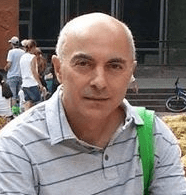By David Davidian
The following fictional Red Cell scenario is intended to stimulate alternative thinking and challenge conventional wisdom, tying together events in operational fiction with national realities.

World Geostrategic Interview with Josh Paul on the Israeli military’s alleged human rights violations and…
World Geostrategic Insights interview with Stefan Demetz on the concepts of engineering approach to economics…
World Geostrategic Insights interviews Masahiro Matsumura on the significance of the trilateral summit between Joe…
World Geostrategic Insights interview with Chian Wen Chan on the reasons pushing toward de-dollarization, whether…
World Geostrategic Insights interviews Saud Al-Sharafat on threats to Jordan’s security from tensions between pro-Iranian…
Let's keep on touch, subscribe to updates


